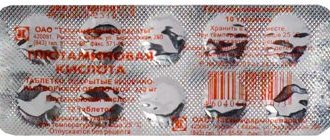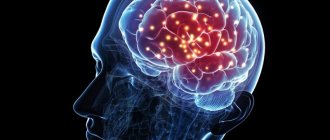A whole complex of psychological symptoms that manifest themselves very acutely as a response to a particular stressful situation is united by the concept of adaptation disorder.
The pathology is classified as independent and is not an exacerbation of any mental disorders. The prevalence of the disorder is very high - the ratio is 1:5, and the total duration is from several months to 2 years.
At the same time, the usefulness of psychological adaptation is always closely related to the absence of disturbances in the biological and physiological sphere. Otherwise, the expected psychotherapeutic effect without eliminating the somatic root cause will be either extremely weak even with long-term therapy, or it will not exist at all.
Likewise, it is important to take into account the patient’s initial personality type, his social status and living conditions. For example, the course of an adaptation disorder in a choleric person may be exactly the opposite of that of a melancholic person. And such variability often complicates the diagnosis of the disease.
Causes
Adaptation disorder arises and develops primarily against the background of an emotionally stressful situation. Provoking factors can be both psychosocial and medical:
- breakup of a very significant relationship;
- dismissal from work;
- protracted family conflicts;
- emigration;
- low self-esteem;
- perfectionism;
- systematic dissatisfaction by society with the psychological needs of the individual: a tendency to solitude or, conversely, the need for increased attention;
- major material losses;
- regular financial difficulties;
- a complete change in the usual way of life;
- divorce;
- natural disasters or military actions;
- conscription into the army;
- individual predisposition to excessive dramatization of stressful situations;
- emerging health problems, undergoing major operations;
- serious illness of a family member.
To a large extent, the situation risks getting worse in combination with the following biological and physiological factors:
- Iron-deficiency anemia;
- immunodeficiency state;
- changes in loads for the worse;
- forced changes in diet and microelement composition of water;
- changes in atmospheric pressure;
- sudden climatic changes.
The disease rarely occurs immediately. Typically, the intensity of destructive emotions increases during the first 1-3 months after the causative factor, and in some cases provokes negative social and even medical consequences.
Important. Despite the fact that the death of a loved one causes most of the similar temporary difficulties in professional and social life, such behavioral pathologies are not considered as an adaptation disorder. Everything that happens is considered within the acceptable norm for reacting to the loss of a loved one.
Risk categories
In addition to the reasons listed, you may be at risk of developing this mental disorder.
- Genetic predisposition.
- Gender.
- Features of individual adaptability to certain life situations.
- The inability to eliminate the situation causing stress in the body.
- Experienced abortions in women.
- The presence of serious illnesses.
Sometimes the occurrence of maladjustment in adult life can be caused by situations experienced in childhood, for example, parental alcoholism, fights in the family, separation from parents (due to deprivation of parental rights), living in a war zone, conflicts with classmates.
Finding a person in a risk category can provoke more serious mental disorders than maladjustment. This is, for example, prolonged depression or bipolar disorder.
Symptoms
The patient has a clear connection with the stressful situation he suffered. Moreover, stress means both acute and chronic. In a situation with acute stress, clinical symptoms develop within 10-14 days.
The patient's mood is constantly depressed to a mild or moderate degree. There is a trend of improvement in the evening and a significant decrease in the morning.
In almost every case there is an anxious state. There is a certain amount of anxiety that is directly related to the psychotraumatic factor. The experiences are difficult, exhausting, appear immediately after waking up and persistently persist throughout the day. Sometimes you manage to distract yourself, and by the evening it can become much better, but only before going to bed. When you try to sleep, your anxiety gets worse again. Such painful and painful experiences become a serious obstacle in the process of learning and professional activity.
One of the symptoms of adjustment disorder is sleep disturbances . The process of falling asleep is very long, the dreams are disturbing or nightmarish. Awakenings are most often premature, very early, with the inability to fall back to sleep.
Appetite is slightly reduced, but the patient often forgets about food due to complete immersion in experiences. If offered food, most often he eats the entire portion.
The general condition is asthenic. Concentration suffers, fatigue increases, and the body feels constant lethargy. Often all this is accompanied by excessive tearfulness and varying degrees of irritability, up to open conflict and aggression.
There is an urgent need for privacy . The patient minimizes the number of contacts and closes off completely.
Behavioral disorders and decreased moral standards are manifested in actions that are unusual for the patient. Often this is driving a car or motorcycle at top speed. In this case, there is a real threat to health and life from accidents. It can also be vandalism, hooliganism or serious misdemeanors up to and including criminal liability .
Rarely without physiological problems. Patients complain of difficulty breathing, pressing chest pain, tachycardia, severe headaches and insomnia.
There are changes in self-esteem. It is rapidly declining.
Often the patient looks older than his age. Skin turgor is significantly reduced, early wrinkles and gray hair are observed.
In some cases, abuse of alcohol, nicotine or drugs begins. Joining sects is common.
The melancholy is clearly expressed. It is very painful. It is against this background that the patient often experiences suicidal thoughts. Fortunately, they are not persistent, the patient retains critical thinking, and timely psychotherapeutic assistance eliminates this threat.
Diagnostics
Adaptation disorder must be differentiated from other pathological conditions that are not related to mental disorder. These are severe depressive disorders in the form of somatization, substance abuse disorders, post-traumatic disorders and behavioral pathologies.
The main diagnostic criteria for adjustment disorder are as follows:
- The pathological condition is a consequence of the response to stress, which manifests itself during the first 3 months after a particular incident.
- Relationships with others, the learning process or professional work activity are carried out by the patient with great difficulties.
- Clinical signs inherently go beyond the normal range of conventional reactions. The patient overdramatizes the event, exaggerates its hopelessness, and such a reaction is greatly delayed.
Treatment
The basis of treatment, in addition to psychosocial factors, must necessarily include biological ones. Depending on the predominance of specific manifestations, treatment is differentiated, step-by-step and comprehensive.
The basic component in this case is psychotherapy. It is necessary to change the patient's attitude towards what happened and convince him to accept the situation as part of the necessary life experience. Reassess the patient’s role in the current situation and form an active position in him in relation to overcoming the current circumstances.
Group psychotherapy is often particularly effective , the techniques of which allow you to openly express your anger, anxiety, fears and the subjective feeling of complete hopelessness of the situation.
The attitude of specialists towards drug treatment in cases of adaptation disorder remains ambiguous. But the best results are still achieved faster by patients with a competent combination of medications and cognitive behavioral therapy.
In the case of a short-term disorder with mild or moderate anxiety and asthenic symptoms, taking anxiolytics is often quite sufficient. At the same time, the dynamics of the patient's condition requires careful monitoring . If hypochondriacal and depressive reactions worsen, an antidepressant should be added. In terms of effectiveness, Paroxetine, Sertraline, Citalopram, Fluoxetine and Fluvoxamine are among the first.
Phenazepam, Clonazepam, Alprazolam and Tofisopam help relieve acute anxiety. Slightly less often drugs with barbiturates are used: Valocordin, Valoserdin, Corvalol.
Attention. Uncontrolled and prolonged use of barbiturates, even after 1 month of use, leads to the formation of persistent psychological and physical dependence.
Service price
- HOSPITAL Day hospital5 000
- Day hospital with intensive care8,000
- 24-hour hospital (all inclusive, cost per day) 10,000
- 24-hour hospital (all inclusive, cost per day). Single occupancy20 000
- 24-hour hospital (all inclusive, cost per day). Single occupancy in a superior room 30,000
- Primary family counseling for relatives of patients undergoing inpatient treatment free of charge
- Group psychotherapy for relatives of patients undergoing inpatient treatment free of charge
- Group psychotherapy for 24-hour and day hospital patients free of charge
Adjustment disorder in the army
The diagnosis of adaptation disorder for military service is a serious problem that gives every reason for a commission.
A strict regime, heavy physical activity, distance from home and the inability to communicate with loved ones create enormous psychological stress. Not everyone can cope with this. Open access to weapons creates a very real threat to the lives of others from a sick soldier.
The risk group consists of conscripts who have poor relationships with their parents, who do not know how to stand up for themselves, systematically feel their own inferiority and react sharply to failures.
The test results of soldiers with the identified disorder show 3 main root causes for the rapid development of the pathology:
- Separation from loved ones. 88% of respondents admit that they begin to suffer from this issue from the first day of service.
- Inability to cope with the difficulties of preparation. In particular, categorically abandon your taste habits, follow a difficult daily routine and endure excessive physical exertion.
- Hazing. Ridicule and humiliation from the command and comrades.
The following manifestations can be considered obvious signs of adaptation disorder in a conscript in the army:
- lack of interest in any activity, reluctance to achieve any results;
- general loss of strength and lack of faith in one’s own capabilities;
- lack of appetite, insomnia, blood pressure fluctuations, unusual sweating, frequent headaches;
- open anger, conflict, irritability mixed with excessive vulnerability;
- memory impairment, basic errors in simple tasks, state of prostration;
- aggressive opposition to discipline, attempts at communication from colleagues, isolation.
To be classified, the disorder requires an official opinion from a psychiatrist. This can be either a civilian specialist, or an examination by specialists from a military medical commission.
Due to the potential for symptoms of the disorder to manifest in the future, despite the treatment received, the soldier is registered with a psychiatrist. This is a precaution against possible violence towards strangers, causing intentional harm to both oneself and others, which is typical for such a diagnosis.
There is an automatic ban on driving a car, employment in law enforcement agencies or security forces, and possession of any type of weapon.
How to get rid of it yourself
Few people manage to get rid of anxiety disorder on their own. This is a disease, it needs to be treated, and not wait until it “goes away on its own” or try to fight it on your own. But there are many ways to temporarily reduce anxiety, stop a panic attack, reduce tension and feelings of fear. These include: auto-training, water treatments (cold shower in the morning, warm bath in the evening), giving up alcohol, physical exercise (“intensive exercise”), normalizing the daily routine and sleep-wake cycle, spiritual development, personal growth, etc.
See advice from psychologists on how to cope with anxiety and panic HERE.
ICD-10 code
In the International Classification of Diseases, a disorder such as adjustment disorder is coded F43: Reaction to severe stress and adjustment disorders .
Pay attention to the articles on the site with ICD code F43: Acute stress reaction, Post-traumatic stress disorder.









